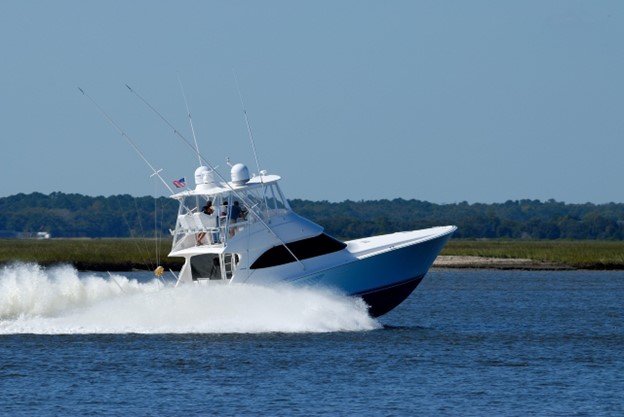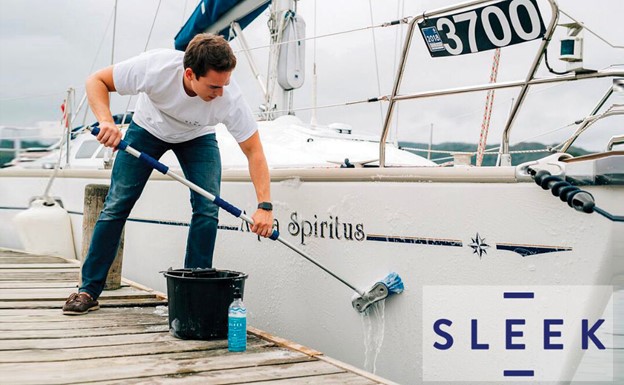
Are you a boat owner who wants to ensure the safety of your vessel during a storm? Storm preparation is a crucial aspect of responsible boating, as powerful weather systems can pose significant risks to your boat’s well-being. Understanding the essential steps to protect your vessel before a storm strikes can make all the difference in safeguarding your investment and preventing potential damage.
In this article, we’ll present the key strategies and precautions every boat owner should take to fortify their boat and ensure its resilience in the face of adverse weather conditions. So, let’s set sail on this journey of storm preparation for your beloved boat.
Secure Loose Items on Deck
Securing loose items on deck is a crucial step in storm preparation for an impending storm when you are out at sea. The crew’s safety and the boat’s integrity can be seriously compromised if loose items are left unsecured during turbulent weather conditions. Here are the steps to help ensure that potential hazards are minimized and the boat is better equipped to handle the storm preparation safely:
- Tie Down Larger Objects: Use strong ropes or bungee cords to secure chairs, tables, and other sizable objects to fixed points on the deck. Ensure the knots are tight and check them twice to be confident in their strength.
- Stow Away Smaller Items: Any loose items that could become projectiles should be stowed away in secure storage areas below deck. Use lockers or compartments with latches to keep things in place.
- Secure Loose Lines and Rigging: Neatly coil up excess lines and tie them off using appropriate knots such as a cleat hitch or figure-eight knot. Check all rigging connections for tightness and make necessary adjustments.
Taking these precautions will significantly lower the risk of boat damage and crew injuries during the storm. Proper storm preparation is essential for the safety of everyone on board. It’s also a good idea to double-check the boat’s overall condition and ensure that all safety equipment, such as life jackets and emergency supplies, is easily accessible and in good working order.
Check Mooring Lines and Fenders
Check your mooring lines and fenders to ensure they’re secure and ready to protect your beloved boat during rough weather. Mooring line maintenance and proper storm preparation is crucial in ensuring the safety of your vessel during storms. Scrutinize each mooring line for any signs of wear or damage, such as fraying or weak spots. Replace any worn-out lines immediately to prevent them from snapping under the pressure of strong winds and waves. Additionally, ensure that all mooring lines are properly tied and secured to your boat and the dock.
Regarding fender selection and placement, choosing the right size and type for your boat is essential. Fenders are cushioned between your ship and the dock or other boats, protecting them from impact damage caused by rough waters or strong winds. Select fenders that are appropriate for the size and weight of your vessel and the conditions you may encounter. Place them strategically along the sides of your boat, focusing on areas prone to contact with docks or other boats. A 3×4 table can help illustrate this:
| Boat Size | Fender Quantity | Fender Placement |
| Small | 2 | One on each side amidships |
| Medium | 4 | Two on each side amidships |
| Large | 6 | Two on each side amidships + bow |
Following these guidelines for storm preparation, mooring line maintenance, and proper fender selection and placement can greatly increase the chances of protecting your boat during a storm. Remember that storms can be unpredictable, so it’s always better to be over-prepared during storm preparation than caught off guard.
Inspect and Reinforce Weak Areas of the Boat
Check for any weak areas on your boat and reinforce them to ensure proper protection during a storm. Strengthening vulnerable spots and fortifying weak areas is crucial in preventing damage to your vessel. Start by inspecting key areas such as the hull, deck, windows, and hatches. These are common areas where weaknesses may develop over time due to wear and tear or exposure to harsh weather conditions.
To assist you in identifying and reinforcing these weak points, refer to the table below:
| Weak Areas | Inspection Tips | Reinforcement Techniques |
| Hull | Look for cracks, blisters, or dents | Apply epoxy resin or fiberglass patches |
| Deck | Check for soft spots or delamination | Install additional layers of fiberglass or plywood |
| Windows | Examine seals and frames | Replace worn-out seals and reinforce them with sealant |
| Hatches | Ensure secure closures | Add latches or upgrade hinges |
By thoroughly examining these areas using the inspection tips provided, you can identify any existing weaknesses that need immediate attention. Once identified, utilize the reinforcement techniques mentioned in the table to strengthen these vulnerable spots. Remember that reinforcing weak areas not only protects your boat from potential storm damage but also improves its overall structural integrity, ensuring proper boat maintenance.
Seal Any Potential Entry Points for Water

Secure your boat by sealing any possible openings to prevent water from infiltrating. This is one of the most crucial steps in ensuring the safety of your vessel during a storm. Waterproofing techniques are essential in keeping your boat dry and protected. Start by inspecting all areas where water could enter, such as hatches, windows, doors, and vents. Check for any marks of wear or damage and repair or replace them as necessary. Use high-quality marine sealants and caulks to create a watertight seal around these openings.
To engage the audience further, here are two sub-lists with important points to consider:
Regular Maintenance:
- Inspect all seals regularly and reapply a sealant if needed.
- Pay special attention to vulnerable areas like through-hulls, fittings, and deck hardware.
- Ensure that rubber gaskets on hatches are in good condition.
- Clean out scupper drains to prevent blockage.
Emergency Repair Kits:
- Keep an emergency repair kit onboard, including marine tape, epoxy putty, patches, and spare parts.
- Familiarize yourself with how to use these materials effectively before an emergency arises.
- Store the repair kit in a readily accessible location so you can quickly address any unforeseen leaks or breaches.
By following these waterproofing techniques and being prepared with an emergency boat repair kit, you can minimize the risk of water entering your boat during a storm. Taking storm preparation will help safeguard your vessel and ensure its longevity even in challenging weather conditions.
Create a Storm Preparation Checklist
Before the storm hits, ensure you have a checklist in place to ensure your boat is fully prepared for any potential weather-related challenges. This checklist will act as a guide to help you gather all the necessary emergency supplies and create an effective communication plan. Being proactive and organized can minimize damage and protect your vessel during storms.
| Emergency Supplies | Communication Plan |
| Extra ropes | Designated emergency contacts |
| Fenders | Planned departure time |
| Anchors | Expected return time |
| Bilge pumps | Marine radio training |
You can better protect your boat by following this storm preparation checklist and having the necessary emergency supplies and communication plan. Remember to regularly review and update your checklist to ensure that all supplies are in good condition and that communication plans are up-to-date. Being prepared is crucial in safeguarding your vessel from potential storm damage.
Stay Informed and Have a Plan
Ensure you stay informed and have a solid plan to navigate any potential stormy situations while keeping your boat safe. Regarding storm preparation for your boat, staying knowledgeable about weather conditions is crucial. Subscribe to weather alerts and watch updates from the National Weather Service or other reliable sources. It will help you anticipate any upcoming storms and take necessary precautions.
In addition to staying informed, having a well-thought-out plan in case of an emergency is crucial. Here are four essential items to include in your storm preparation checklist:
- Emergency Contacts: Construct a list of emergency contacts, including the coast guard, local marinas, and nearby boaters who can offer assistance if needed. Keep this list readily accessible on your boat so you can quickly reach out for help during a storm.
- Evacuation Routes: Identify evacuation routes specific to your boating location. Familiarize yourself with these routes and share them with your crew members or fellow boaters. Multiple evacuation options are ideal, as some routes may become inaccessible due to flooding or debris during severe storms.
- Communication Devices: Ensure you have reliable communication devices such as marine VHF radios or satellite phones. These devices can be crucial for contacting emergency services or other vessels.
- Safety Equipment: Stock up on essential safety equipment like life jackets, first aid kits, flares, and fire extinguishers before setting sail. Regularly check their condition and ensure they are easily accessible in case of an emergency during a storm.
By staying informed about storm preparation and weather conditions, you can better protect yourself and your boat when faced with challenging storm situations at sea. Remember to continuously monitor the weather updates throughout your trip and adapt your plans for a safer boating experience during inclement weather conditions.
Final Thoughts
Adequate storm preparation is essential for safeguarding your boat and ensuring its longevity. By implementing a comprehensive plan, including securing loose items, double-checking mooring lines, and adding additional fenders, you can significantly reduce the risk of damage during storms. Regular maintenance and monitoring are vital in detecting potential vulnerabilities early on.
At the Boat Concierge, we understand the importance of storm preparations. Contact us today and let our expert team ensure your vessel is ready to navigate the roughest seas. Don’t wait for the storm to hit; be prepared now!



